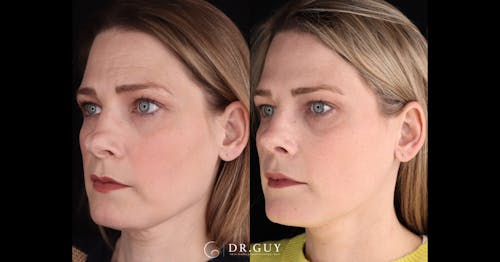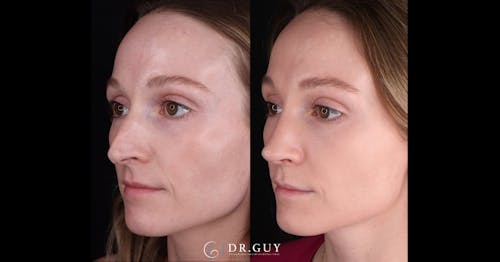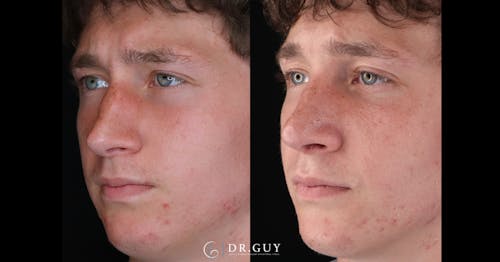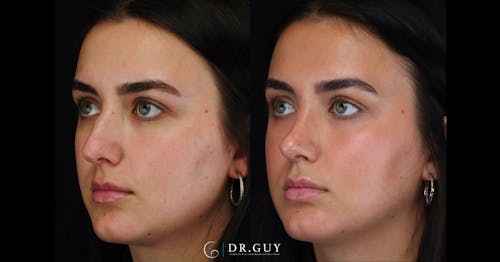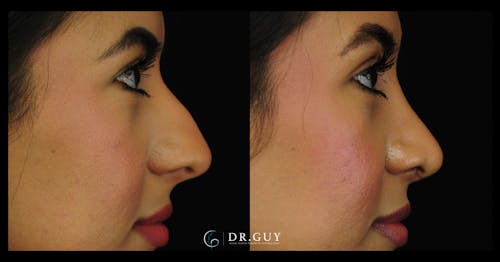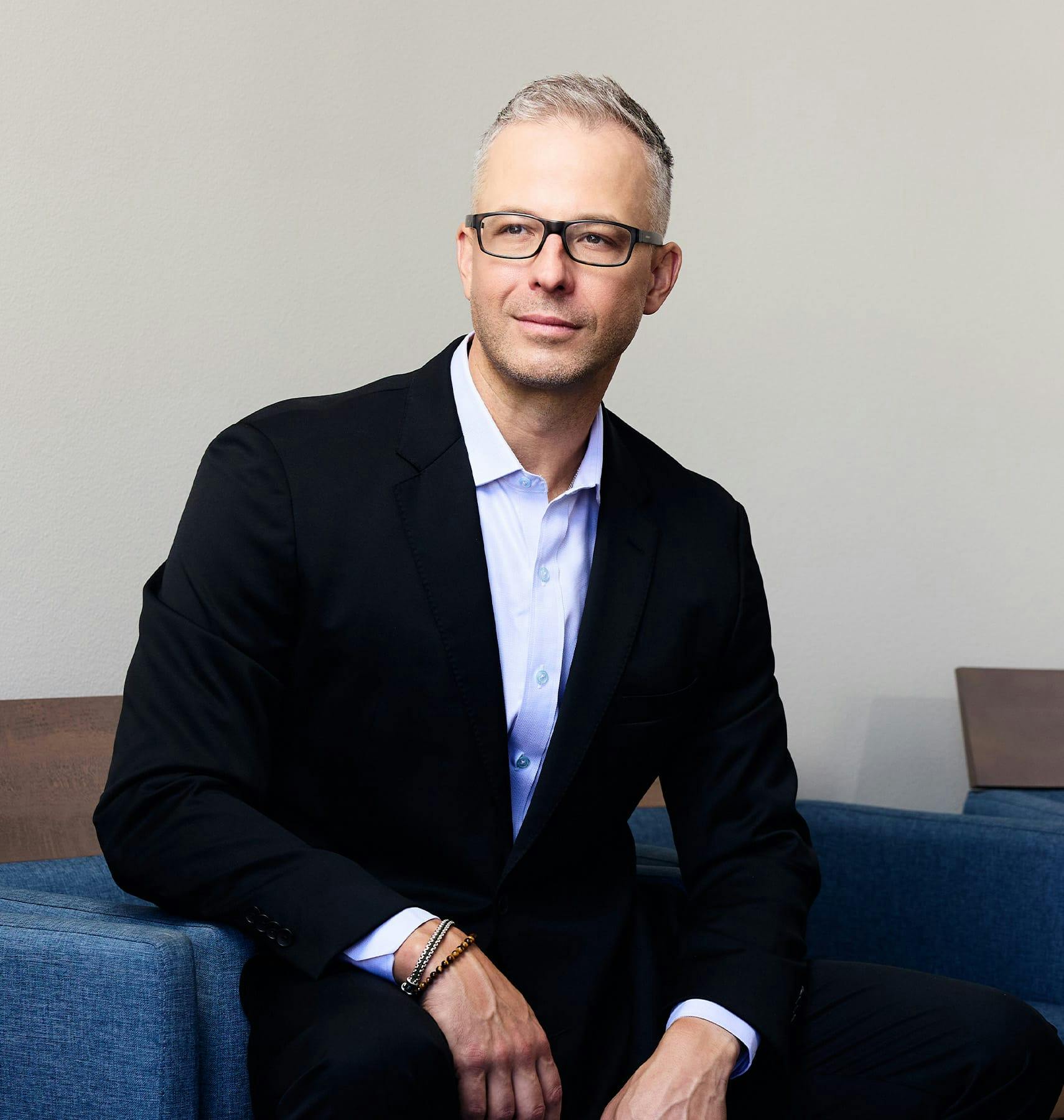Rhinoplasty is a surgical procedure that reshapes the nose to improve its appearance and harmony with other facial features, while also addressing any functional breathing issues.
What Is Rhinoplasty?
Rhinoplasty, more commonly known as a nose job, is a procedure that alters the shape or function of the nose. Different from other cosmetic procedures, rhinoplasty is not performed to highlight an area of the nose, but rather to subtly adjust the face without making it apparent that work was done. Surgeons must approach rhinoplasty with the utmost precision due to the nose’s unique structure. At the top of the nose is bone, and at the bottom is cartilage. Depending on the patient’s specific needs and wishes, rhinoplasty can modify the bone, cartilage, skin, or every aspect of the nose. While the changes this procedure makes can be small, they can have a significant impact on the area.
Dr. Guy recognizes the subjective nature of plastic surgery of the nose. What people in one country deem a beautiful nose is not necessarily the same for all cultures. These distinctions may even exist within different regions of the United States. Dr. Guy consults with each patient to ensure he thoroughly understands their concerns and expectations. From there, he works collaboratively with the patient and is able to show potential results using 3D Vectra software to ensure the best plan of action. He strives to help people achieve an appealing aesthetic while maintaining proper function.


